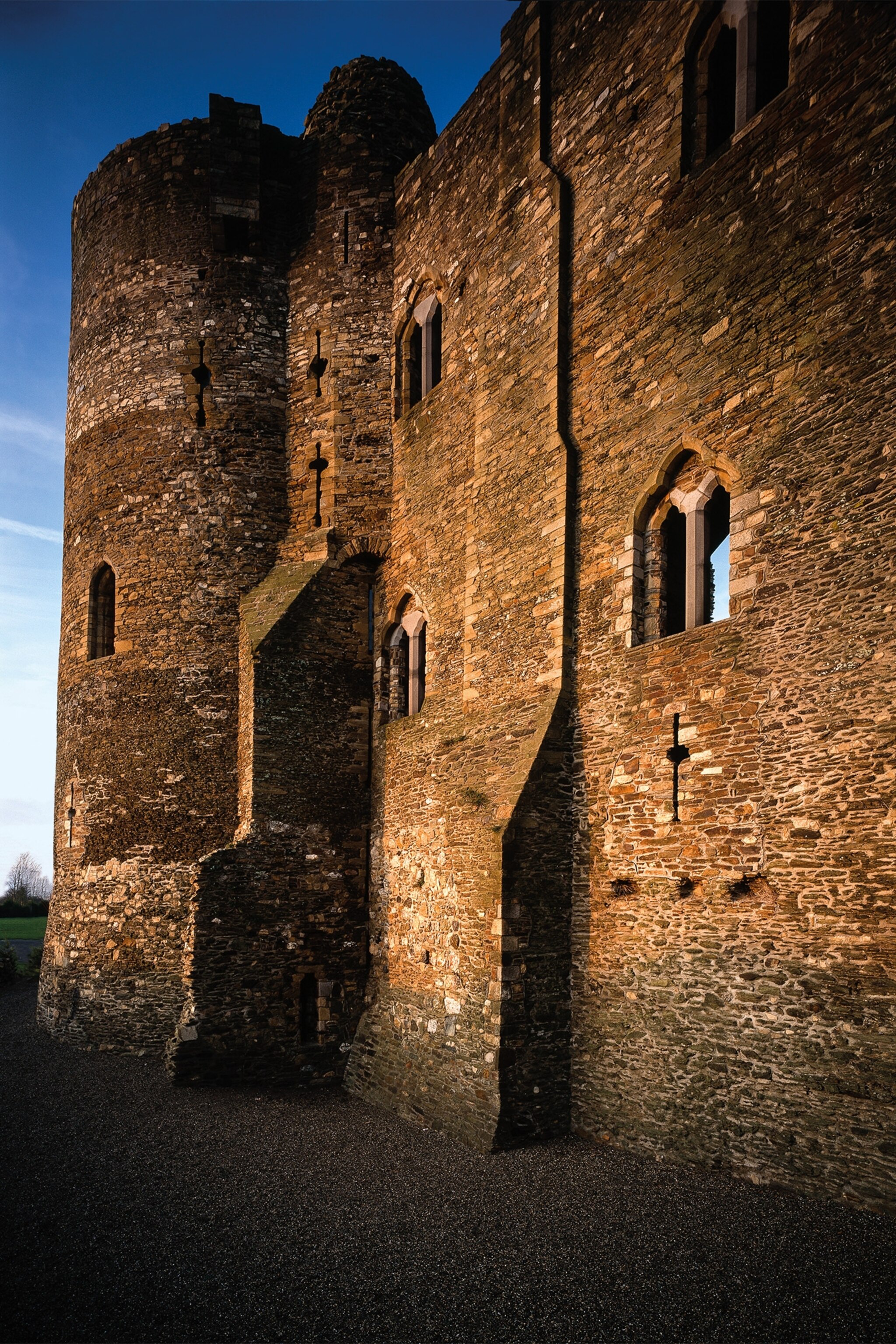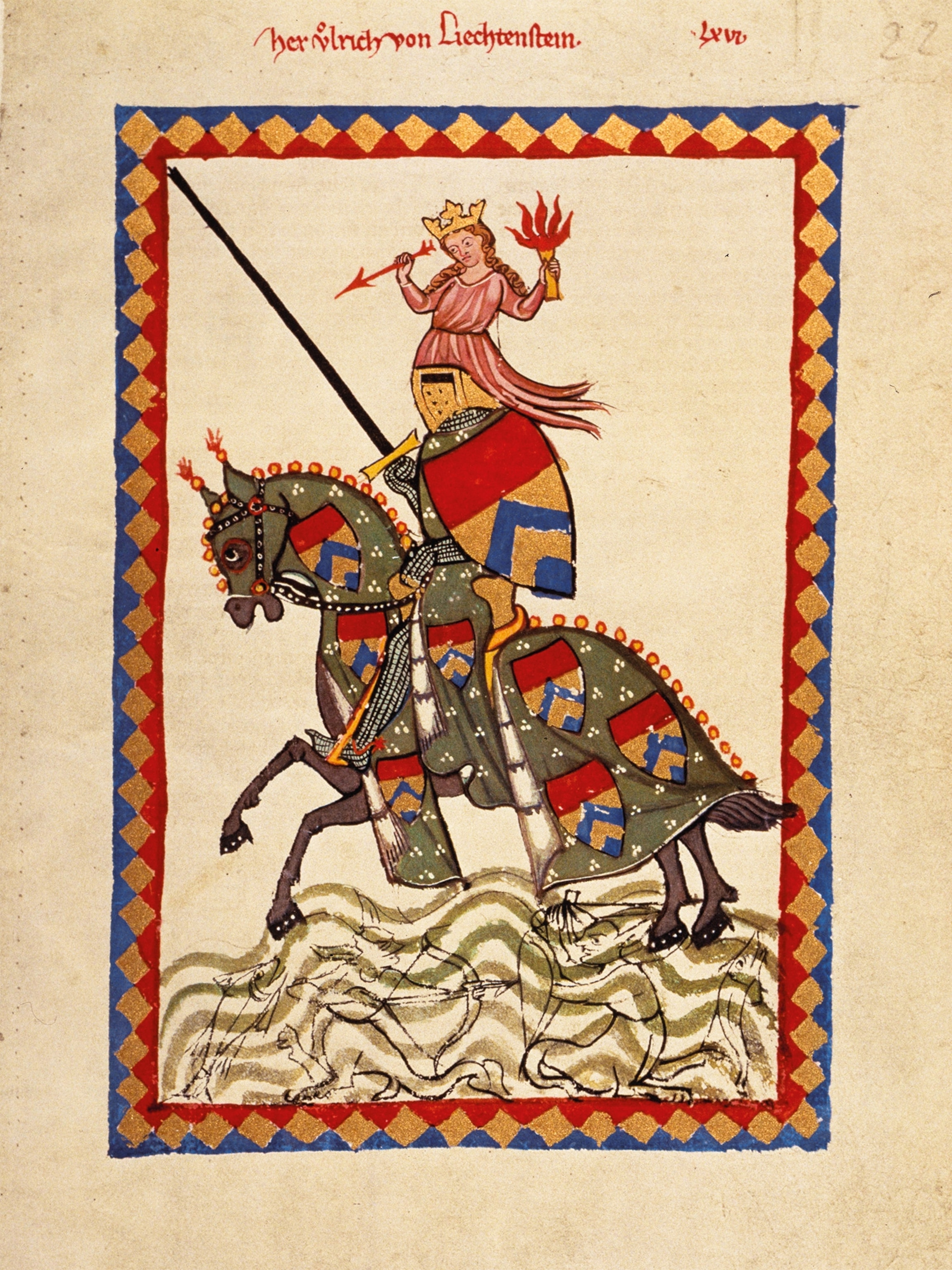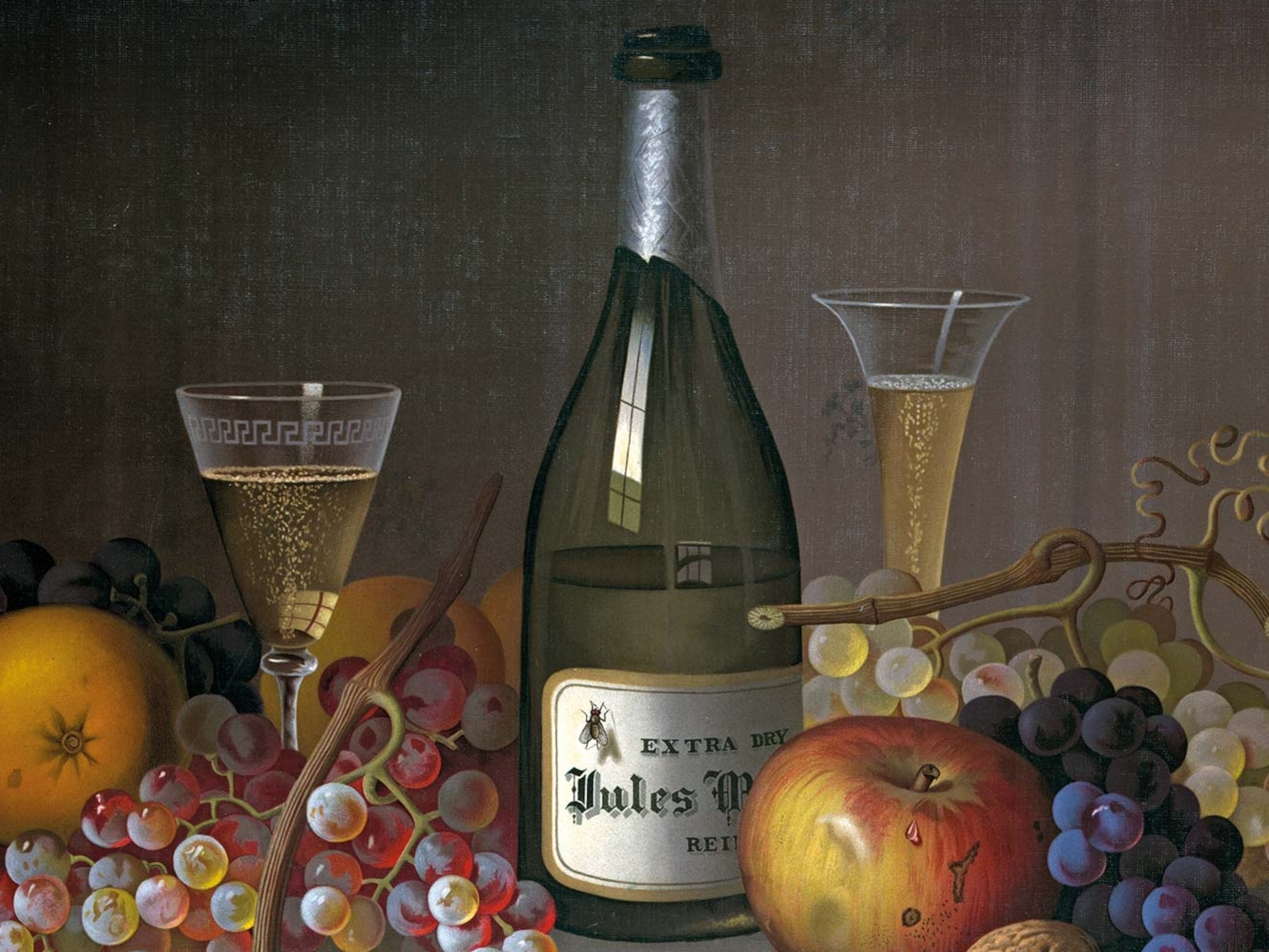
These medieval knights were the 'superheroes' of their time
Epic tales, poems of praise, and fantastic legends swirled around famous knights in the Middle Ages. Their bravery in battle and tournament victories inspired incredible accounts of both fact and fiction.
Knights are among the most iconic characters from the Middle Ages. Their origins harken back to the fall of the Roman Empire in western Europe whose last emperor, Romulus Augustulus, was toppled by a Germanic warlord in A.D. 476. The vacuum left by Rome’s destruction was partially filled by the Roman Catholic Church, and also by relationships between the church and the dominant local lords.
The church supported the lords, in part by anointing kings and lords as God’s chosen rulers, but also controlled them through fear of cutting off God’s approval through interdict and excommunication. The alliances between the papacy and the king of the Franks lasted 500 years. Over time, this was replicated across Europe and both led to and supported the rise of feudalism, a system dependent on knights to support the realm and the church, and a way for society to recruit them.
(Medieval elites used handwashing as a shrewd ‘power play.’ Here’s how.)

The feudal system was based on a complex web of rights and obligations among rulers, nobles, serfs, peasants, and freemen. With little or no commerce, land and its produce were the only forms of wealth and, with it, power. Each feudal lord held sway over his land grant and its people. Over time, feudalism was built on the uniformity that had been previously imposed by the Roman Empire.
Due to a preexisting warrior culture, knights became exalted superstars. They were the product of long training in both military skills and spiritual and societal matters. What bound knights together as a social group was a detailed code of values, behavior, and accomplishments, including courtesy, refinement, honesty, largesse, and gallantry. Becoming a knight certainly meant developing skills of combat and the use of arms, but it also entailed hunting, learning to read, and playing games like chess.
Knights of Camelot

Knightly ideals can be grouped into three strands: noble birth, Christian values, and military prowess. Literature about knights, such as those of the legendary King Arthur and his court, became popular and would have a profound influence on the origins of the European novel. The importance of chivalric culture in storytelling persists today through its extensive use in fantasy fiction and fandom, gaming, animation, television shows, and movies.
One way to truly understand the nature of knighthood in this period is to meet some of the knights themselves, whether historical figures like Richard the Lionheart, or literary ones. In fact, the line between historical record and literary invention is often blurred. Literary models influenced the behavior of real knights, while real knights offered abundant material for writers of literary accounts.
The Codex Manesse




The 'Swan Knight'
One of the earliest and most representative examples of a chivalrous knight was Godfrey of Bouillon (circa 1060-1100). After the 14th century, he was included among the so-called Nine Worthies: nine men through the ages (some historical, others legendary) deemed to have embodied the ideals of chivalry.
(The Templars got rich fighting for God—then lost it all.)
Godfrey was the son of Count Eustace II of Boulogne and Ida of Lorraine, and together with his brothers helped lead the First Crusade in 1096. Godfrey’s fame and prestige among the diverse group of barons commanding the Crusade grew so that, when the crusaders succeeded in reclaiming Jerusalem from Islamic rule in 1099, they offered Godfrey the throne of the new kingdom of Jerusalem. Godfrey, in a gesture that ticked all the chivalric boxes, refused and piously argued that no one should wear a golden crown in the city where Christ had worn the crown of thorns. Instead, he agreed to be called the Defender of the Holy Sepulcher.
Role models

Godfrey was such an exemplary knight that he became legendary. Embellished tales were written about his journey to the Holy Land and established his noble lineage. The best known of these stories is the legend of the Knight of the Swan; originally, it was the tale of an anonymous knight who appears in a boat drawn by a swan to rescue a damsel in distress. By the end of the 12th century, popular tellings identified the protagonist with the Bouillon dynasty and claimed that the mysterious Knight of the Swan was none other than Godfrey’s grandfather. It was a story that wove together fact and fiction around the figure of one of the most recognized knights of Christendom. This mixture of literary evocation, embellishment of reality, and celebration of chivalric values developed over a long period in medieval Europe, and especially in the Anglo-French world.
Character development

The 'Tourney Master'
One knight who was well known in both France and England was William Marshal (circa 1146- 1219). He served as royal adviser to four English kings: Henry II, Richard I (popularly known as the Lionheart), John, and Henry III. Even members of the French court grudgingly acknowledged that he was the best knight in the world. William guided these four kings wisely through numerous crises and dangers, making his name synonymous with the model of the chivalric virtues of his time.
The details of Marshal’s life have been preserved in a literary account commissioned by one of his sons, L’histoire de Guillaume le Maréchal, written in Old French verse. Its lines chart Marshal’s meteoric career, from leaving his father’s house to train as a knight (as a second son, this path was expected) to the final hours of his life. Although Marshal was no ordinary knight, the account does offer much insight into what life was like for knights in general at the time. There is a description of Marshal’s training in the house of the powerful Norman nobleman Guillaume de Tancarville, who was his mother’s uncle; his investiture as a knight in 1166; and his first military campaign.
Soon, young Marshal would find an activity that would shape his life and become a true passion: the tournament. These contests were far more brutal than the folk pageant versions celebrated today: more like battles than games. Young knights took part, either individually or in teams, hoping for a chance to demonstrate their fighting prowess and perhaps win themselves fame and fortune.
During the late 1100s, tournaments were enjoying their heyday, and Marshal excelled at the jousts. For more than a decade, he was said to have unhorsed and captured more than 500 combatants as he went from tournament to tournament. Defeated knights would have to pay a ransom. Together with the spoils from seizing harnesses and saddles, Marshal could enjoy a highly valued chivalric practice: largesse. Generosity in distributing the bounty from his wins allowed him to forge valuable loyalties.
As well as excelling on the tournament field, Marshal acted as master of arms and confidant to Prince Henry, son of Henry II of England and heir to the throne. The young prince died before he could wear the crown, and William fulfilled the promise he had made to him to travel to the Holy Land, where he fought for two years alongside the Templars. When Marshal returned, the king offered him the hand of Isabel de Clare, Countess of Pembroke, one of the wealthiest heiresses in the kingdom. The union raised Marshal to the highest ranks of the nobility. His days as a knight-errant were over.
Winner takes it all

Marshal would continue to shine on the battlefields. When Richard the Lionheart was away on the Third Crusade, William protected his throne against the maneuvering of John Lackland, the king’s brother and regent. After Richard’s death, when the same John’s right to the throne was in dispute, Marshal was one of the few great nobles to remain on John’s side during the First Barons’ War, in which the nobility rebelled and forced King John to issue the charter of rights known as Magna Carta.
(The Children's Crusade set out for the Holy Land in 1212. It never arrived.)
This uncompromising loyalty to the crown sealed William Marshal’s reputation as the greatest knight of his time. He died shortly after his last great military victory, the Battle of Lincoln, in 1217, where he succeeded in driving the French army out of England, and forcing the French king to give up his claim to the English throne.

The 'Literary Knight'
While some knights became immortalized through the poems of heroic deeds written about them, others crafted those poems themselves. A rich tradition of literature and illustration developed around the chivalric way of life. The most notable case is perhaps that of Ulrich von Liechtenstein (1200-1278), a knight from Styria (today in Austria), who was known not only for his military exploits but also for his role as a Minnesänger, or troubadour.
He was knighted in 1223 by Leopold VI, the Duke of Austria, one of the most prominent politicians and patrons of his time. Leopold promoted chivalric pursuits at his court and soon chose Ulrich from among the Styrian nobility. Ulrich was granted the important positions of seneschal and marshal, but it was for his writing that he has been remembered.
Two of Ulrich’s works survive. In the Frauenbuch, or Book of Ladies, he laments that courting ladies, which he considers a cornerstone of chivalry, is in decline. The other, the Frauendienst, or Service of Ladies, is a poetry collection (apparently autobiographical) in which Ulrich reflects on conventions of courtly love and chivalric pursuits.

He frames these reflections through two adventures in honor of his lady. In the first, the knight travels disguised as the goddess Venus and competes in jousts and tournaments from Venice to Vienna. During his journey, he faces and defeats several hundred knights. In the second adventure, this time disguised as King Arthur, he sets out with the intention of testing himself against every knight who crosses his path, to bring honor to his lady.
A miniature of Ulrich von Liechtenstein is among 137 such illustrations included in the Codex Manesse. The codex brings together ballads and poems in High Middle German by some 140 Minnesänger and was compiled in the early 1300s. Ulrich appears in the image wearing a suit of chain mail and galloping on a large horse. In his right hand he holds a blunted jousting lance, and in his left, a shield. The poems and illustrations in the Codex Manesse offer some of the best surviving sources for understanding chivalric life at the time.
The 'Last Knight'?
Later in the 14th century, the chivalric ideals of heroes on horseback were increasingly at odds with the military reality in which soldiers engaged on foot. As a result of this change in military strategy, the cavalry of knights on horseback lost the essential role it had played for 200 years. By the time the 15th century got under way, it was reduced to more of a court spectacle. As knights moved away from the battlefield and to tournaments, the ceremonial forms of combat became increasingly elaborate. In this transition, memorable figures emerged, including Jean II le Meingre (1366-1421), also known as Boucicaut.
Jean inherited his moniker from his father (Boucicaut either means “fish basket,” associated with slyness and greed, or—more flatteringly—“cautious ox,” associated with prudence and strength). Like his father, he also succeeded to the office of marshal of France, a position of great power.
As a child, he was a court page and rode in his first military expedition when he was just 12. He left accounts of his grueling training schedule to build strength. Boucicaut ran great distances, perfected jumping from the ground into his horse’s saddle, and learned to climb ladders using his arms alone. At age 16, he was knighted and took part in the Battle of Roosebeke, Flanders, in which the French won a major victory. For two decades, he was the hero of the European battlefields.

And the battles continued. In 1384 Boucicaut fought alongside the Teutonic order in their crusade against the Lithuanians in the Baltic. He then went to Spain, where he fought for John I of Castile against the English invader John of Gaunt. In the Balkans, he backed the Byzantine emperor against the Turks. In what is now Lebanon, he attacked and sacked cities including Tripoli, Sidon, and Beirut. With one military success after another, Boucicaut’s career took off and, in 1391, he was invested marshal of France, as his father had been before him. For a brief period, he was also governor of Genoa.
(Terrifying visions of the Apocalypse revealed the fears of medieval Spain.)
In the late 14th and early 15th centuries, Boucicaut became involved in setting up chivalric orders. Together with 12 other knights, he founded the White Lady of the Green Shield to protect the female relatives of knights away in battle, on crusades, or who had died. This order would attract the praise of court writer Christine de Pisan, who was outspoken about the rights of women.
The perilous life of a knight often entailed suffering, and Boucicaut did endure two major defeats. First, he was among the band of Christian knights routed by the Ottoman Turks at Nicopolis in 1396. His second and definitive defeat came at the Battle of Agincourt in 1415. The English captured Boucicaut and took him to England, where he died in 1421.
'Upon St. Crispin's Day': Boucicaut's final defeat

End of chivalry
The English longbows and trained archers combined to bring victory at Agincourt, along with the tactics of sneak-attack cavalry charges and defensive maneuvers of massed, unknighted foot soldiers. Longbows and new tactics led to killing an enemy at a distance. Black powder firearms—long-barreled arquebuses, muskets, and pistols—came on the scene in the late 1400s, further changing combat. Knights had fought face-to-face with their foes for so long and considered doing so a mark of honor, but these changes made their suits of armor and methods of combat seem outdated.
Systemic changes also hastened the decline of knights. Monarchs grew stronger and were able to develop more modern institutions to collect taxes, create courts of law, and fund standing armies. Distance grew between the church and the state as both competed for power and influence across western Europe.
The knightly world created by feudalism, with its articulated values of nobility, an ingrained social and religious order, and a courtly code of conduct, was shaken to its foundation by these developments. The new world order, centered on a powerful monarchy and its administrators, radically altered their support system, livelihood, beliefs, and the very society that had created them. The age of chivalry was over, but the lives and legends of these medieval men would endure for centuries.
Related Topics
You May Also Like
Go Further
Animals
- Orangutan seen using plants to heal wound for first timeOrangutan seen using plants to heal wound for first time
- What La Palma's 'lava tubes' tell us about life on other planetsWhat La Palma's 'lava tubes' tell us about life on other planets
- This fungus turns cicadas into zombies who procreate—then dieThis fungus turns cicadas into zombies who procreate—then die
- How can we protect grizzlies from their biggest threat—trains?How can we protect grizzlies from their biggest threat—trains?
- This ‘saber-toothed’ salmon wasn’t quite what we thoughtThis ‘saber-toothed’ salmon wasn’t quite what we thought
Environment
- What La Palma's 'lava tubes' tell us about life on other planetsWhat La Palma's 'lava tubes' tell us about life on other planets
- How fungi form ‘fairy rings’ and inspire superstitionsHow fungi form ‘fairy rings’ and inspire superstitions
- Your favorite foods may not taste the same in the future. Here's why.Your favorite foods may not taste the same in the future. Here's why.
- Are the Great Lakes the key to solving America’s emissions conundrum?Are the Great Lakes the key to solving America’s emissions conundrum?
- The world’s historic sites face climate change. Can Petra lead the way?The world’s historic sites face climate change. Can Petra lead the way?
History & Culture
- Meet the ruthless king who unified the Kingdom of Hawai'iMeet the ruthless king who unified the Kingdom of Hawai'i
- Hawaii's Lei Day is about so much more than flowersHawaii's Lei Day is about so much more than flowers
- When treasure hunters find artifacts, who gets to keep them?When treasure hunters find artifacts, who gets to keep them?
Science
- Why ovaries are so crucial to women’s health and longevityWhy ovaries are so crucial to women’s health and longevity
- Orangutan seen using plants to heal wound for first timeOrangutan seen using plants to heal wound for first time
- Should you be concerned about bird flu in your milk?Should you be concerned about bird flu in your milk?
Travel
- On this Croatian peninsula, traditions are securing locals' futuresOn this Croatian peninsula, traditions are securing locals' futures
- Are Italy's 'problem bears' a danger to travellers?Are Italy's 'problem bears' a danger to travellers?
- How to navigate Nantes’ arts and culture scene
- Paid Content
How to navigate Nantes’ arts and culture scene







